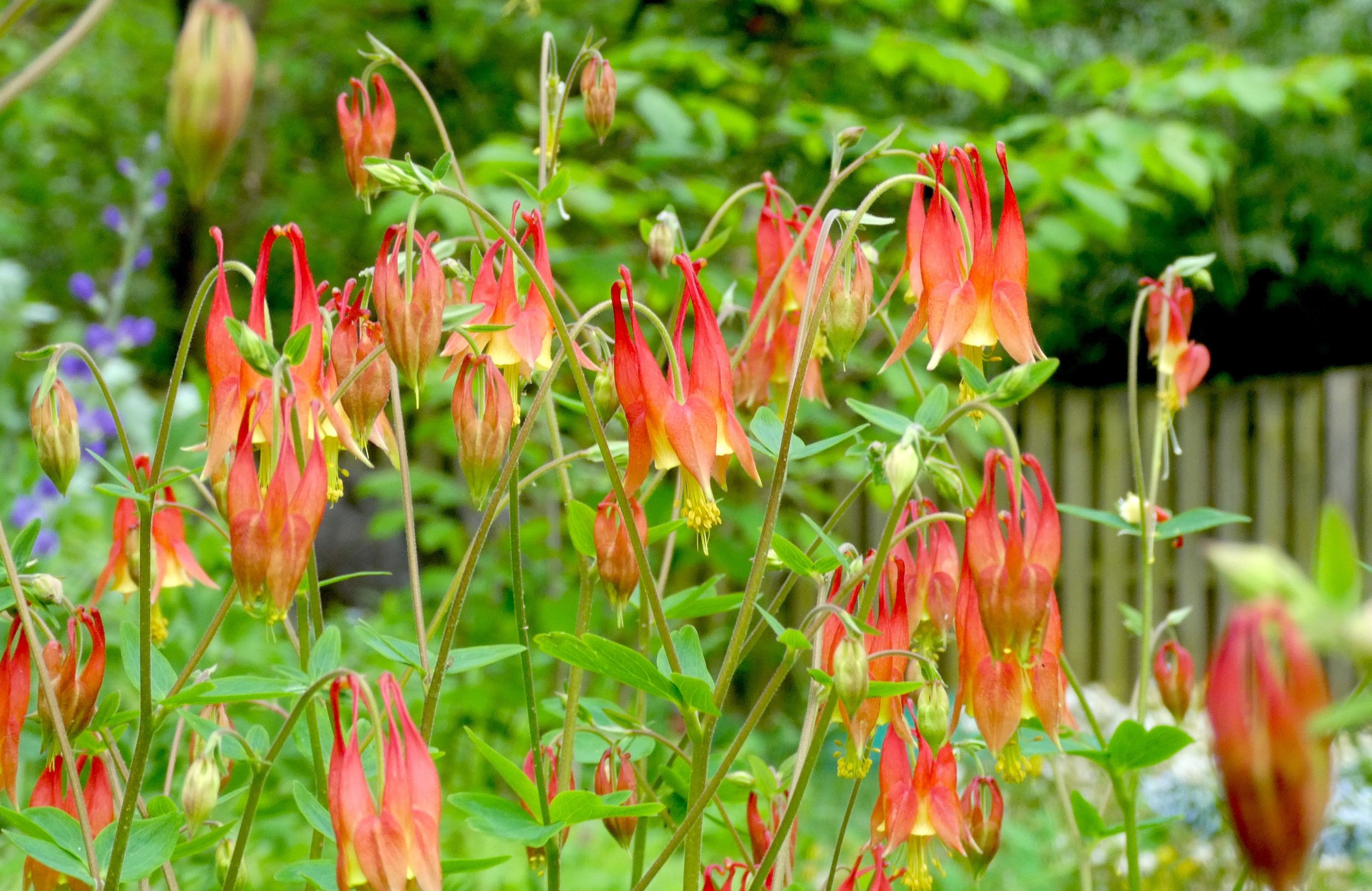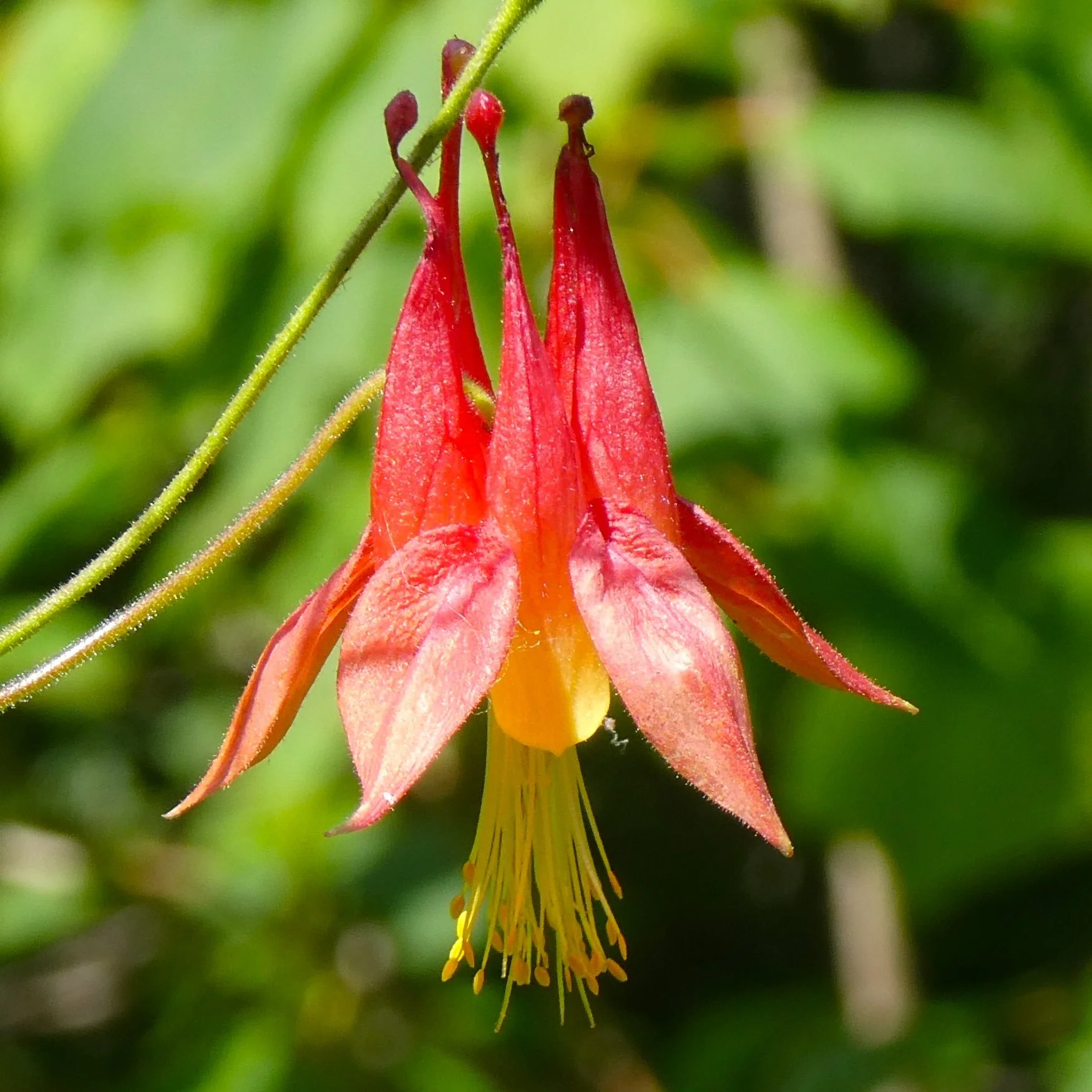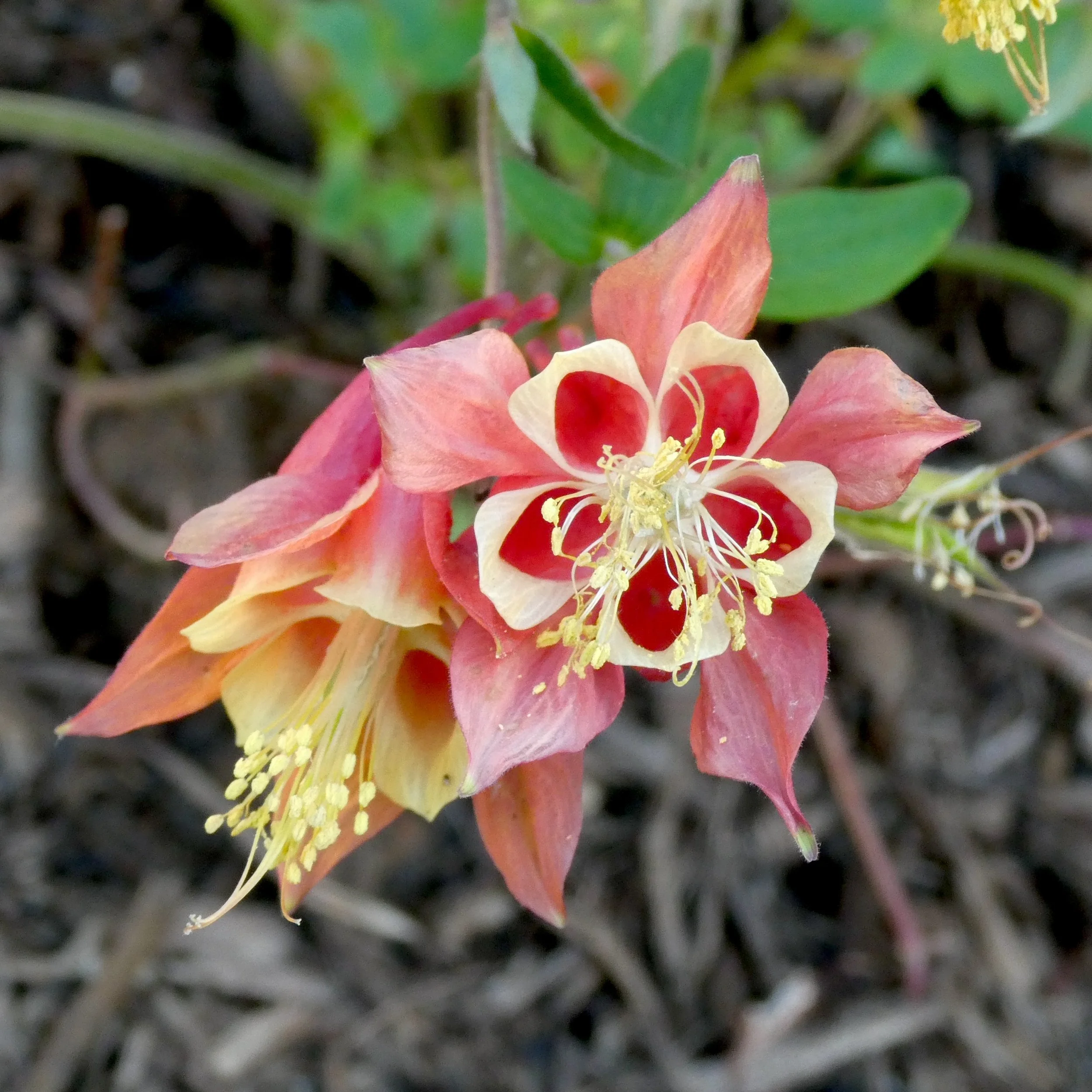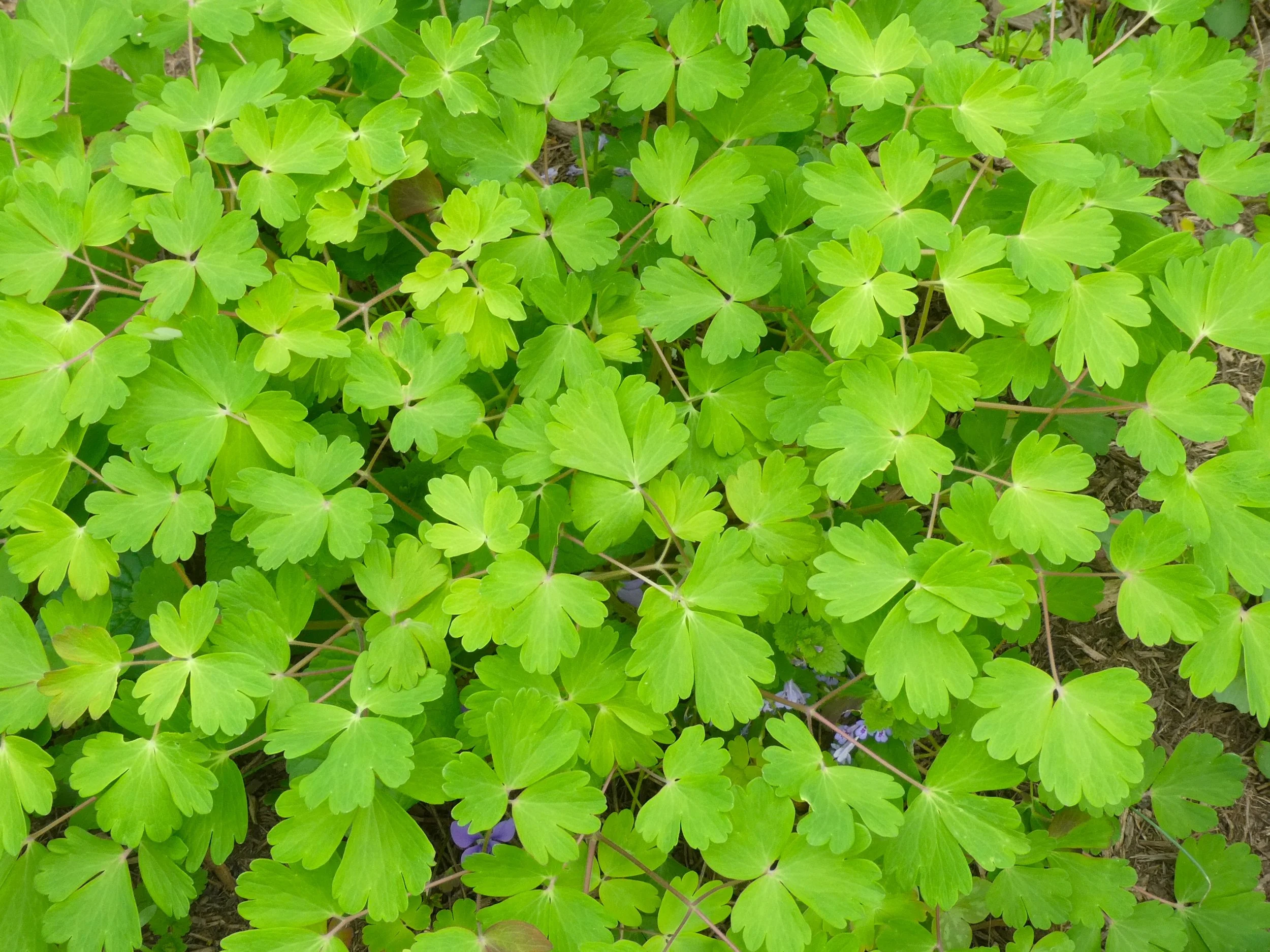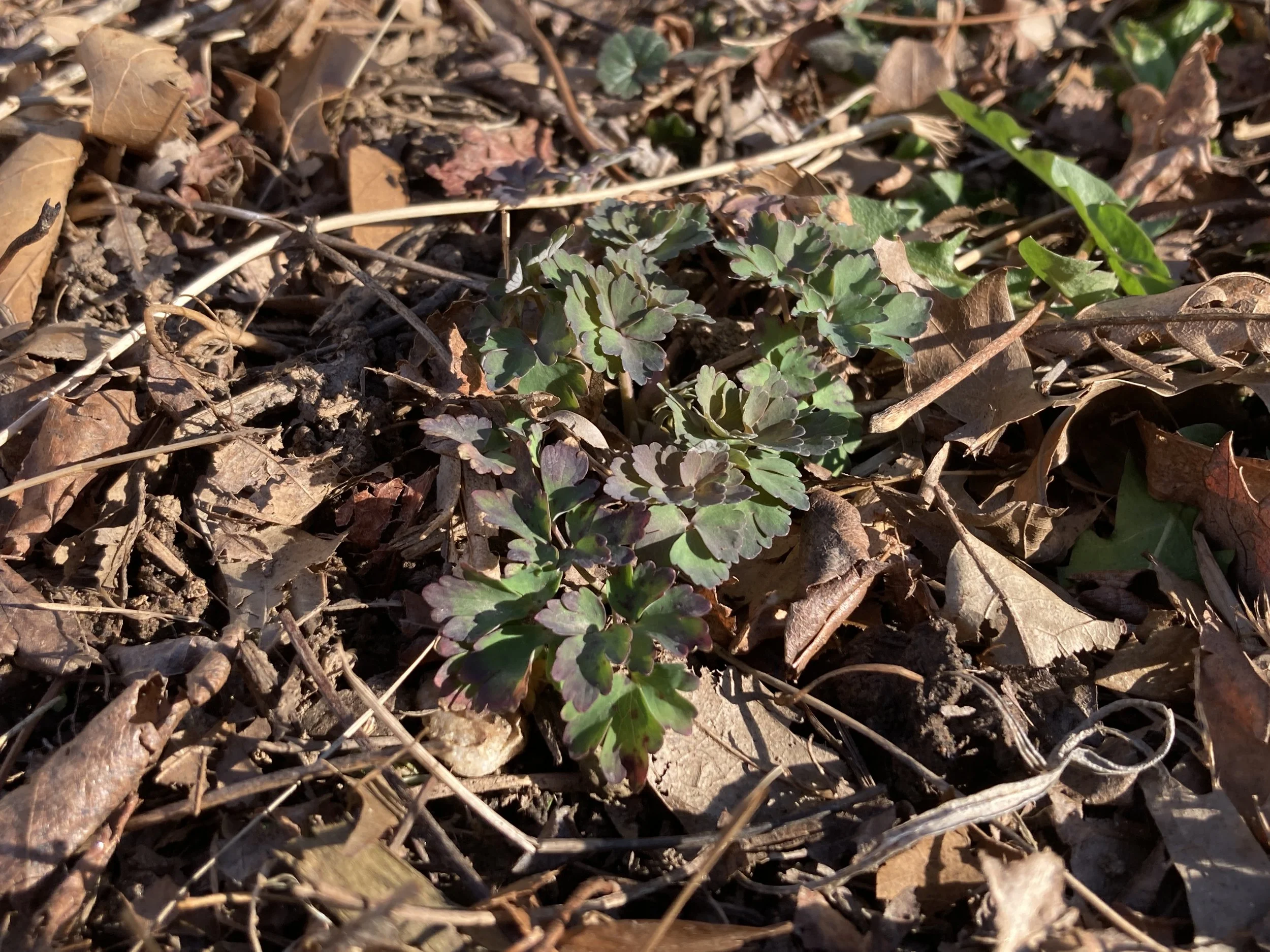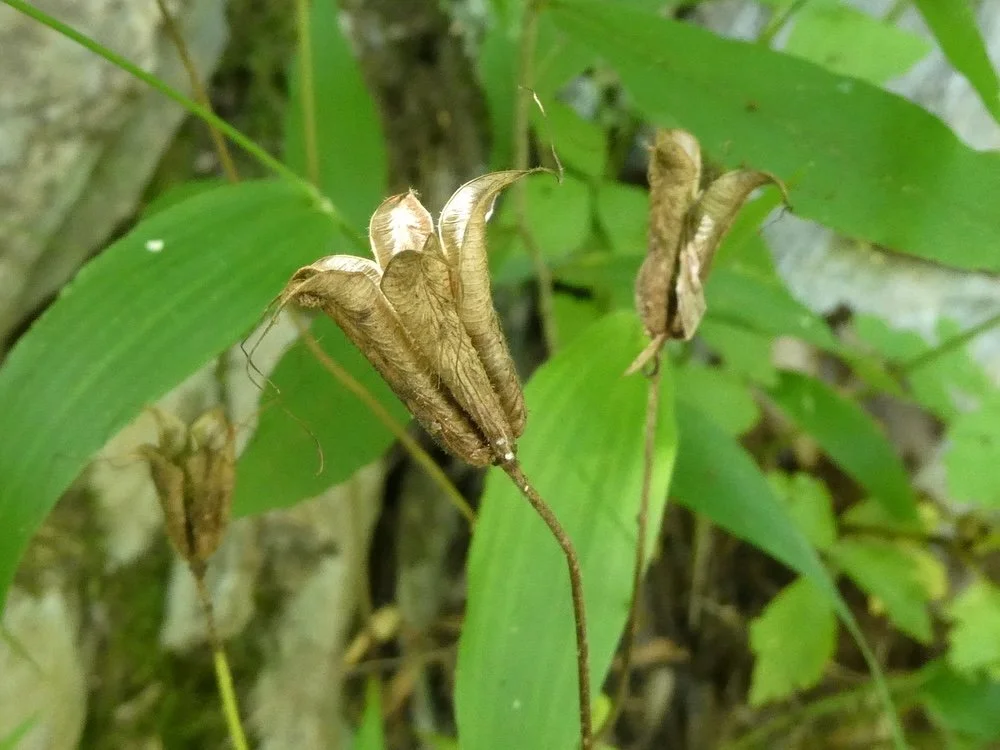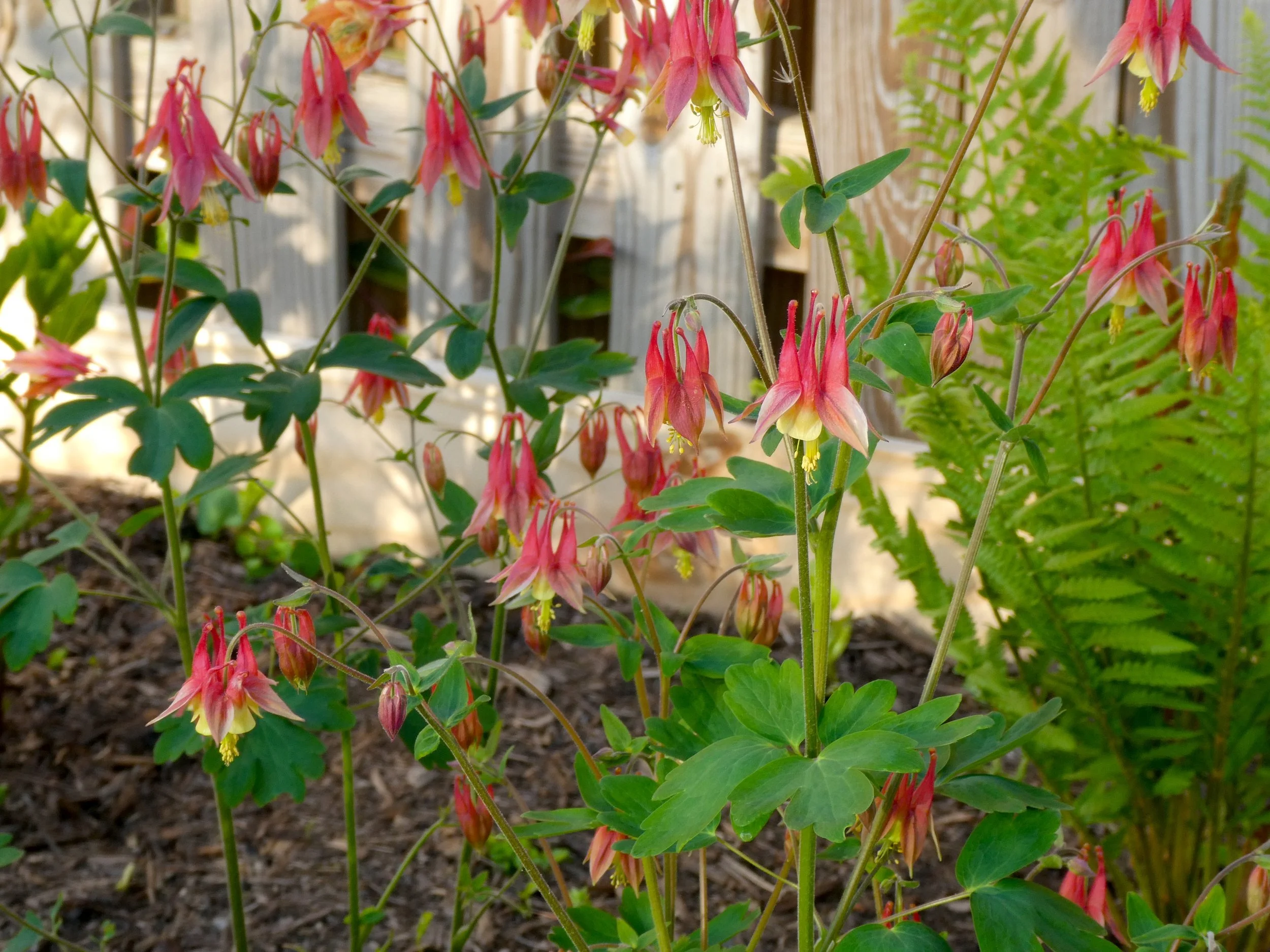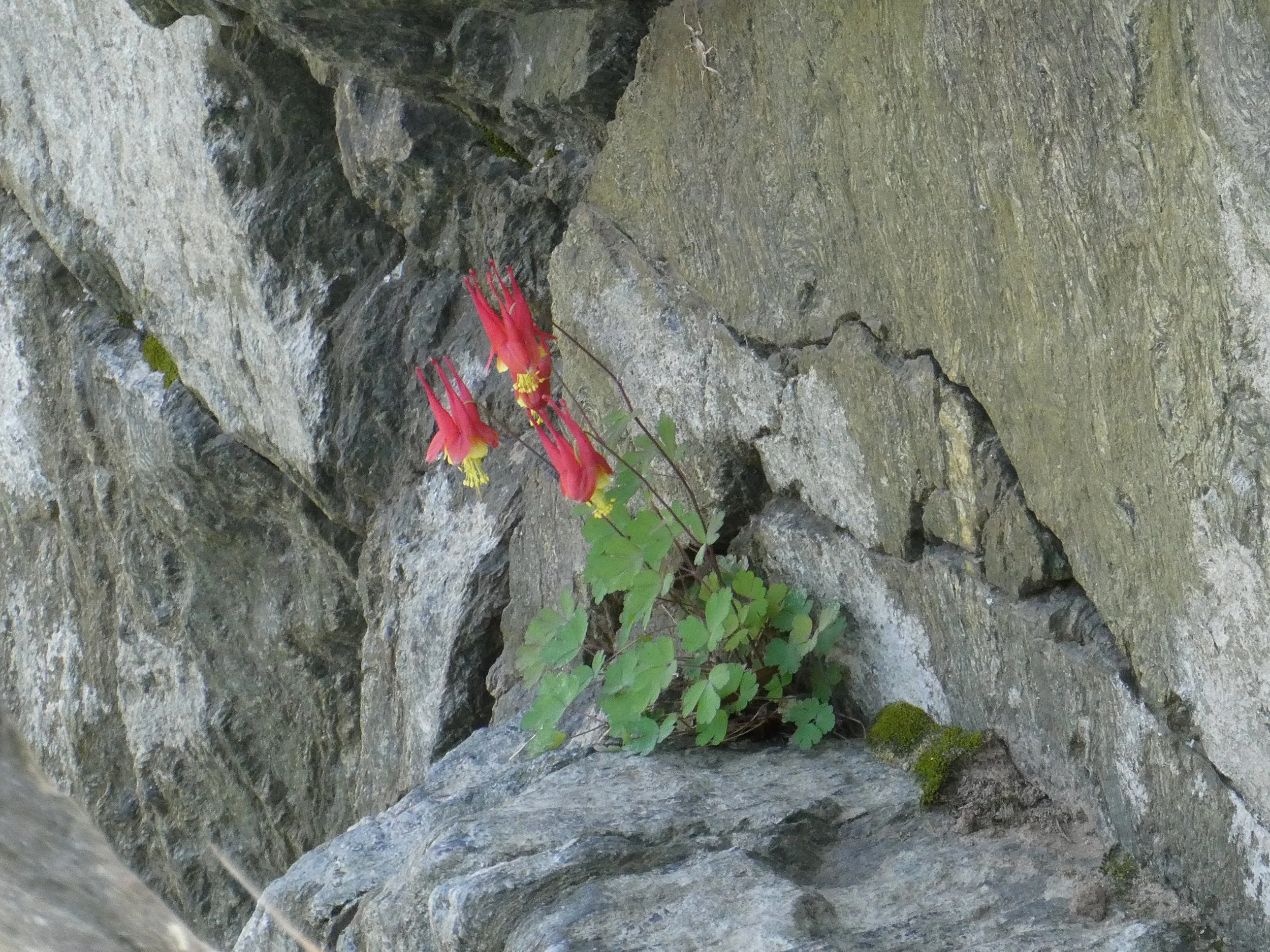Plant of the week 16: Red Columbine (Aquilegia canadensis)
Red Columbine (Aquilegia canadensis) is one of the most vibrant spring blooming wildflowers that you can find across the eastern United States. Plants can stand out from a distance with their bright red flowers that have some yellow on the underside. Also known as Wild Columbine or Eastern Columbine, the flowers are very graceful and resemble lanterns with its distinctive nodding shape. Flowers are an early source of pollen and nectar for a variety of pollinators include bumblebees, butterflies, and even hummingbirds. Blooms can appear in early April, peaking in late April to May, and can last until early June. Each individual flower is relatively long lived and can last for weeks.
The leaves of Columbine are rounded and divided into three leaflets. Individual leaflets are dissected resembling Meadow Rues (Thalictrum). Foliage will go dormant in the winter, but late winter and early spring foliage has a purple hue to it. It is the larval host for the Columbine Duskywing as well as other various moth species.
After blooming, seed capsules turn upright in the summer and mature to a tan or light brown color. Inside the capsules are tens of tiny black seeds. Red Columbine can gently spread around the location of the parent plant when these seeds fall out of the capsule. To encourage spread to other garden areas, you can pinch the capsules and the seeds will fall into your hand or a bag, where you can distribute them. Some songbirds may eat a portion of the seeds.
Red Columbine is native to most states east of the Mississippi River and is the only Columbine native to the eastern United States. Most often, plants are found growing on notches with little soil in the sides of cliffs or outcrops. However, it can also be found growing on the ground in deeper soils. Around Washington D.C., Wild Columbine can be found in the Great Falls areas in Maryland and Virginia as well as Little Bennett Regional Park in Montgomery County, MD.
Overall, Aquilegia canadensis is an adaptable plant; it prefers partial sun but is well adapted to full sun conditions. If grown in deeper shade, flowering may be reduced. It grows in moist, well-draining soils with average moisture, but also exhibits drought tolerance once established. Use Red Columbine in woodland gardens, border gardens cottage gardens, or interspersed with lower growing meadows in a naturalized setting. It is quite deer resistant, and they will usually plants alone.
The name “Aquilegia” comes from the Latin “aquila” which means “eagle”, in reference to the spurred flower petals that look like an eagle's talons.

